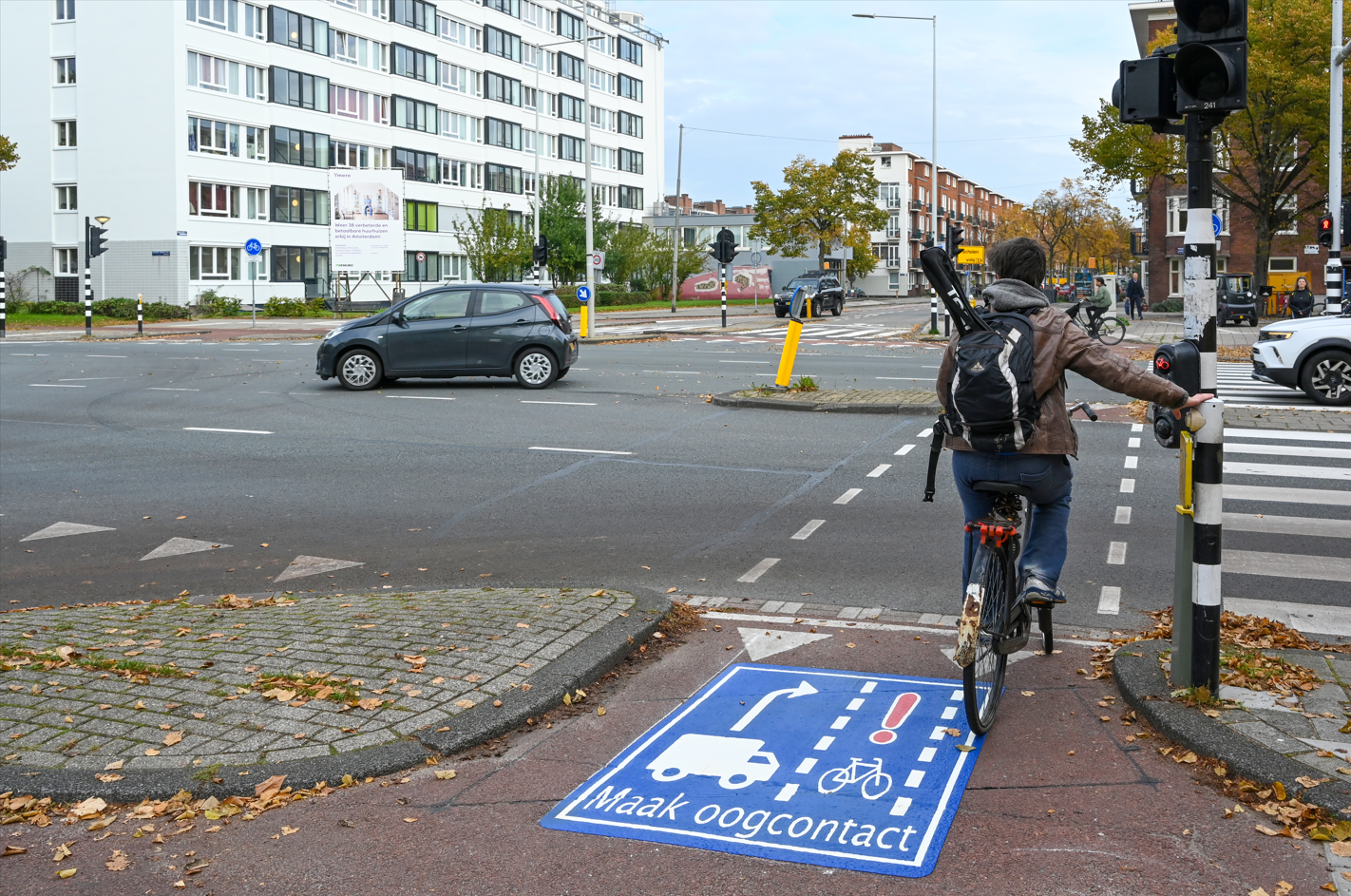Blind spot warning at busy intersections in Amsterdam
Amsterdam has placed ‘blind spot stamps’ at 11 dangerous intersections in October. These are markings on bicycle lanes with the text ‘make eye contact!’. The stamps are meant to draw cyclists’ attention to trucks turning right and their blind spot.
Trucks are to pay extra attention when taking a turn, but it is also necessary for cyclists to pay extra attention. Truck drivers do not always see cyclists when they are situated in their blind spot. The blind spot stamps at intersections with a lot of freight traffic incite cyclists to take into account the trucks´ blind spot. In turn, traffic signs at these intersections ask truckdrivers to pay attention to cyclists.
Pilot
Dangerous blind spots are relatively more common at intersections where the speed limit is 50 km/h and where there is no separate lane for traffic turning right. In 2021, the municipality of Amsterdam tested the effect of the blind spot stamps at six intersections for three months. During the pilot, cyclists were observed and interviewed before and after the stamps were placed. The focus of the pilot was the behaviour of cyclists and the interaction between cyclists and car traffic. Several types of stamp were tested, with and without the text ‘make eye contact’.
Does it work?
The pilot showed that more than half of the cyclists (53%) saw the stamp. Most cyclists (83%) understand the message of the stamp and know how to act accordingly. And they do! Before the stamps were placed, it was observed that 28,4% of the cyclists looked to the left at the intersections. After the stamps were placed, that percentage was 35,4. That is an increase of 7%. There were also less near accidents at these test locations.
Extra measures
The municipality is taking more measures in Amsterdam to prevent accidents involving blind spots. At 69 busy intersections in the city, all road users (going in several directions) have green light at the same time. The municipality is investigating if the traffic lights can be adjusted and if it is possible to create a separate lane for traffic turning right. Not all intersections have these lanes, because space is often limited. Besides that, traffic often goes straight ahead, making it easier for cycle traffic to flow through when there is green light.
The municipality is also looking at possibilities to take away obstacles that obstruct visibility for traffic. And of course the municipality is considering if blind spot stamps and extra traffic signs have to be placed at these intersections.








